Abstract
At least six epizootics of simian hemorrhagic fever have occurred at four different primate centers. Although these diseases could easily be transmitted to other monkeys of the Macaca species, difficulty has been encountered in isolating the causative virus in cell culture. The results of this study have shown that the isolation of simian hemorrhagic fever virus strains in cell culture is dependent upon the use of a susceptible MA-104 cell strain and that the ability of such strains to support the replication of these viral agents may vary. By using this information we have been able to isolate a viral agent in cell culture from materials derived from the Sussex/69 epizootic.
Full text
PDF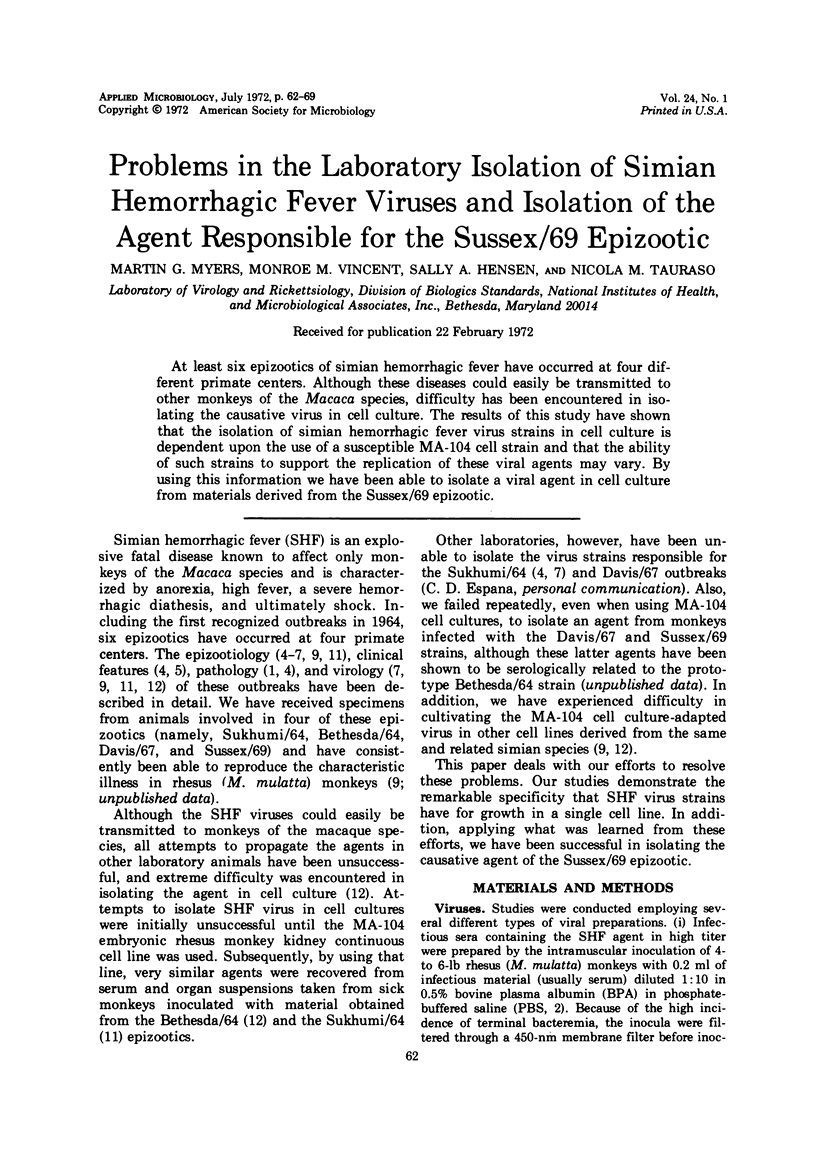
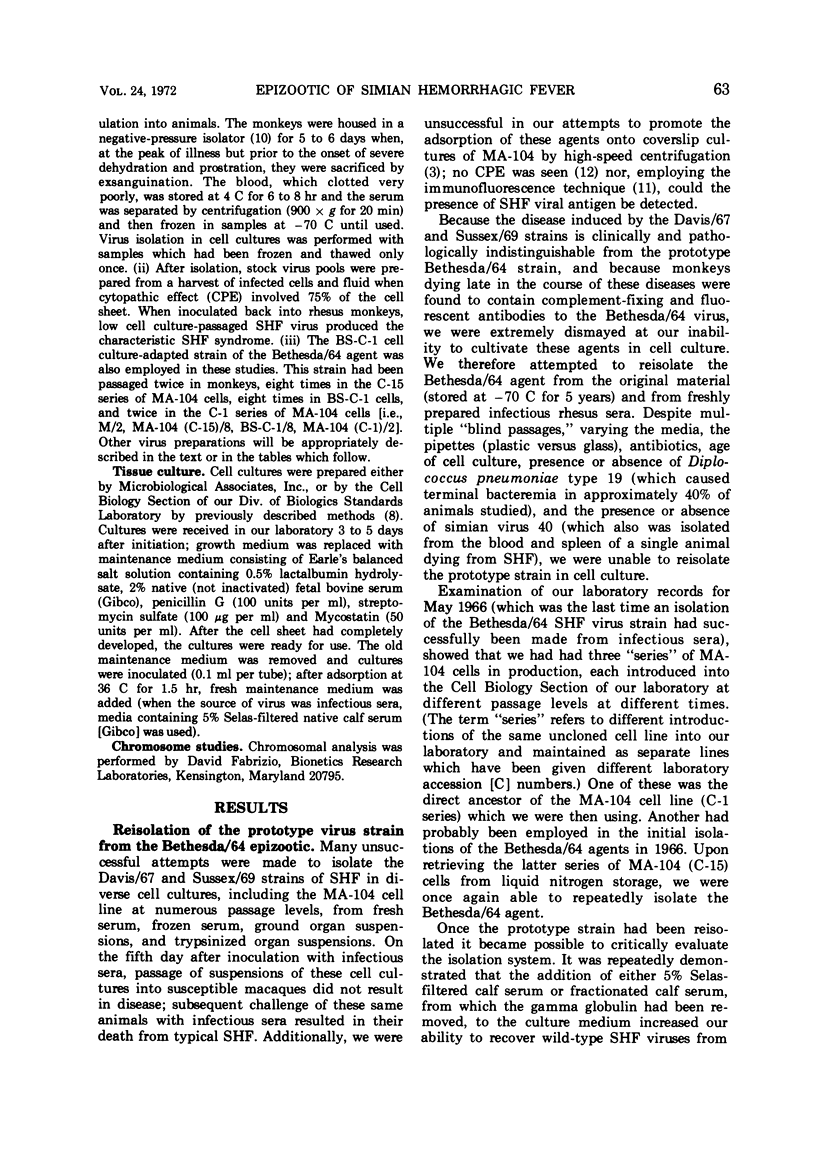
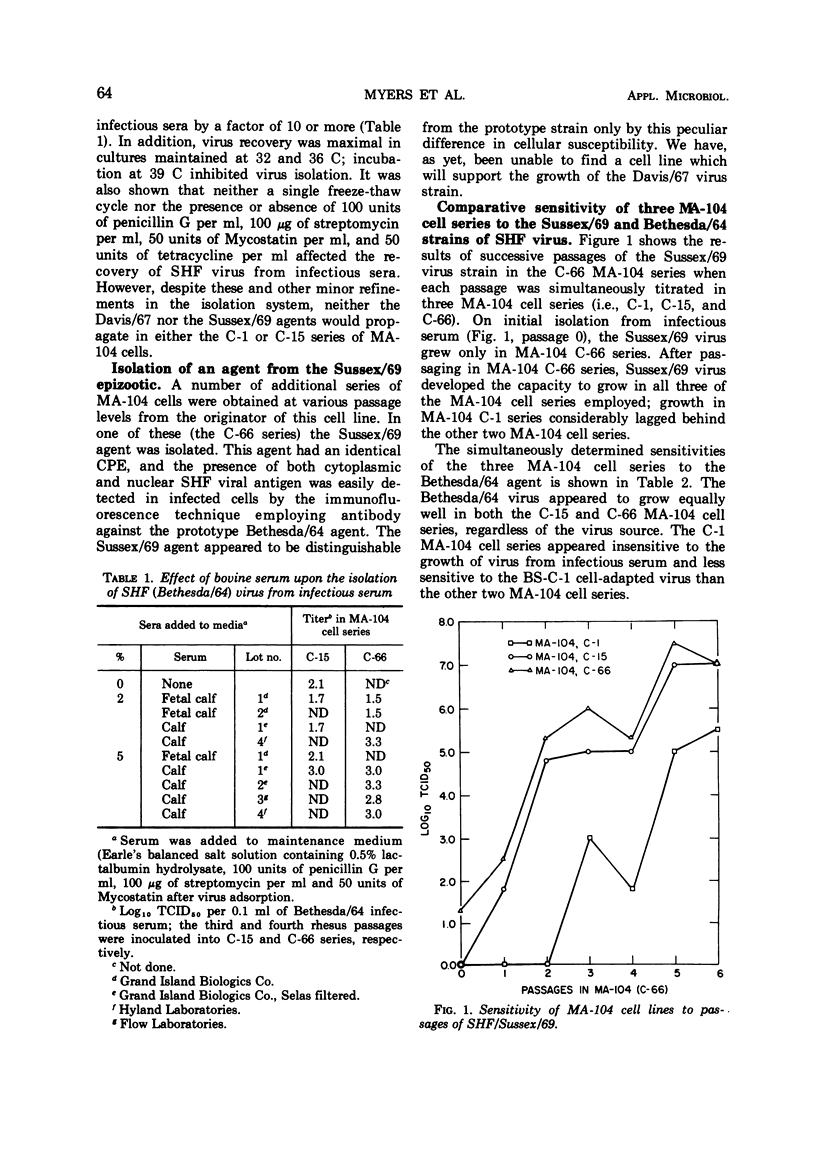
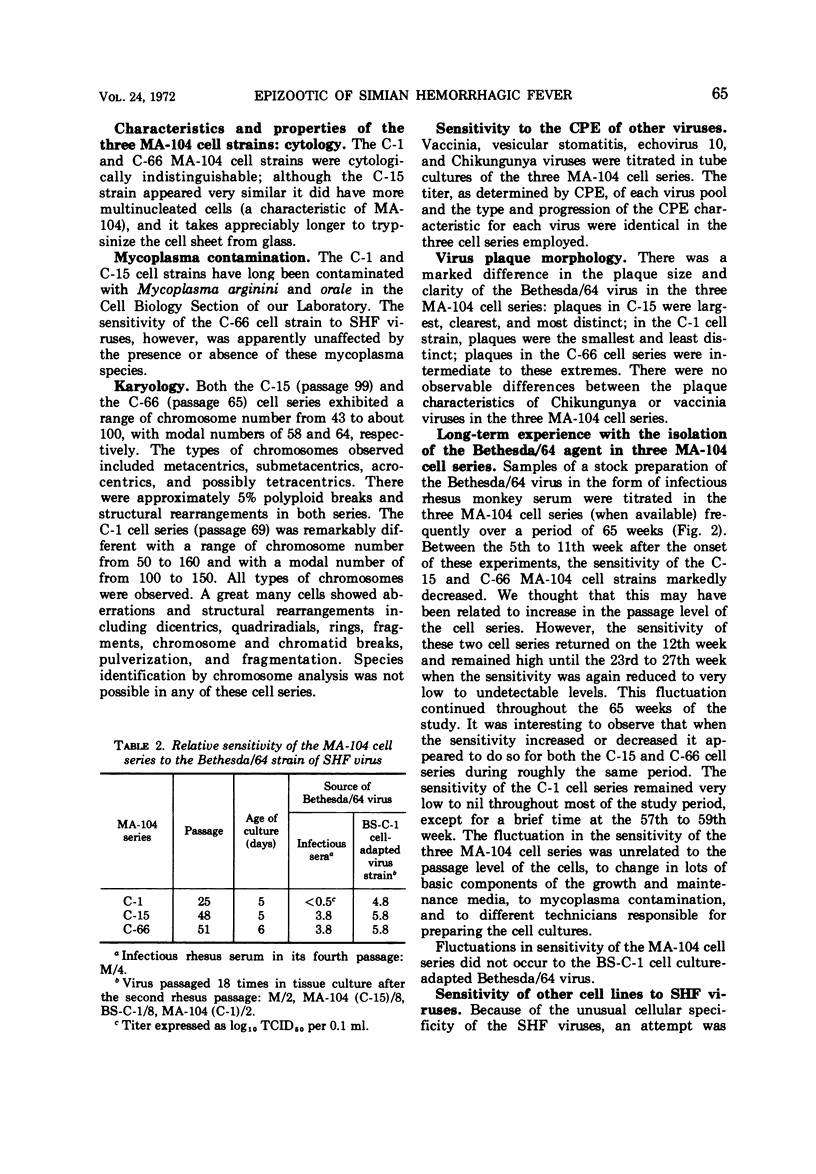
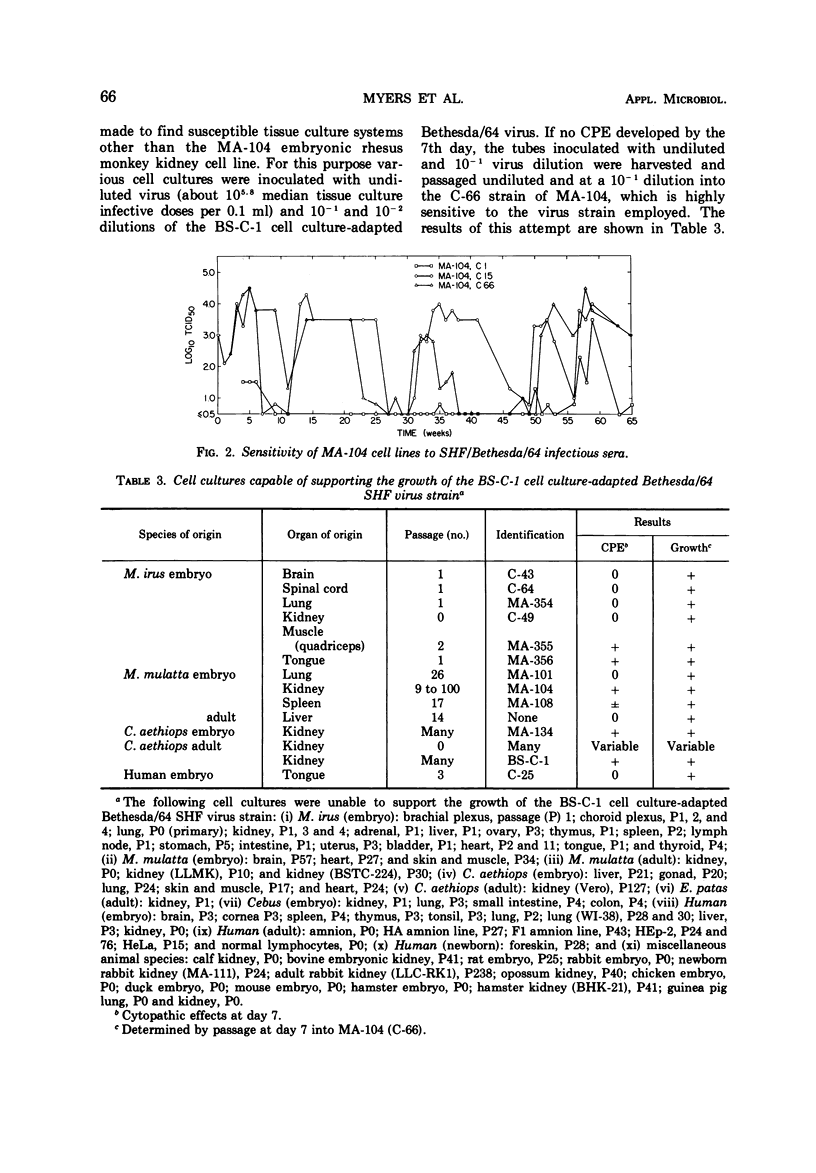
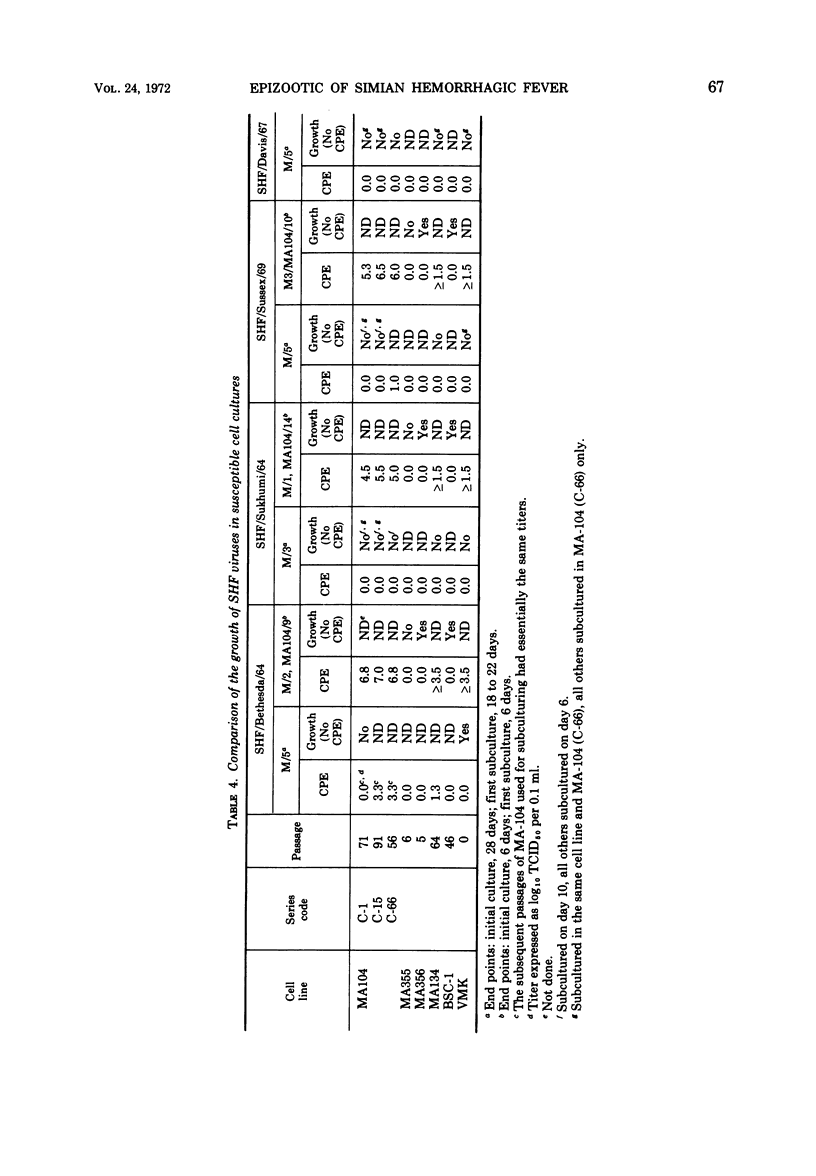
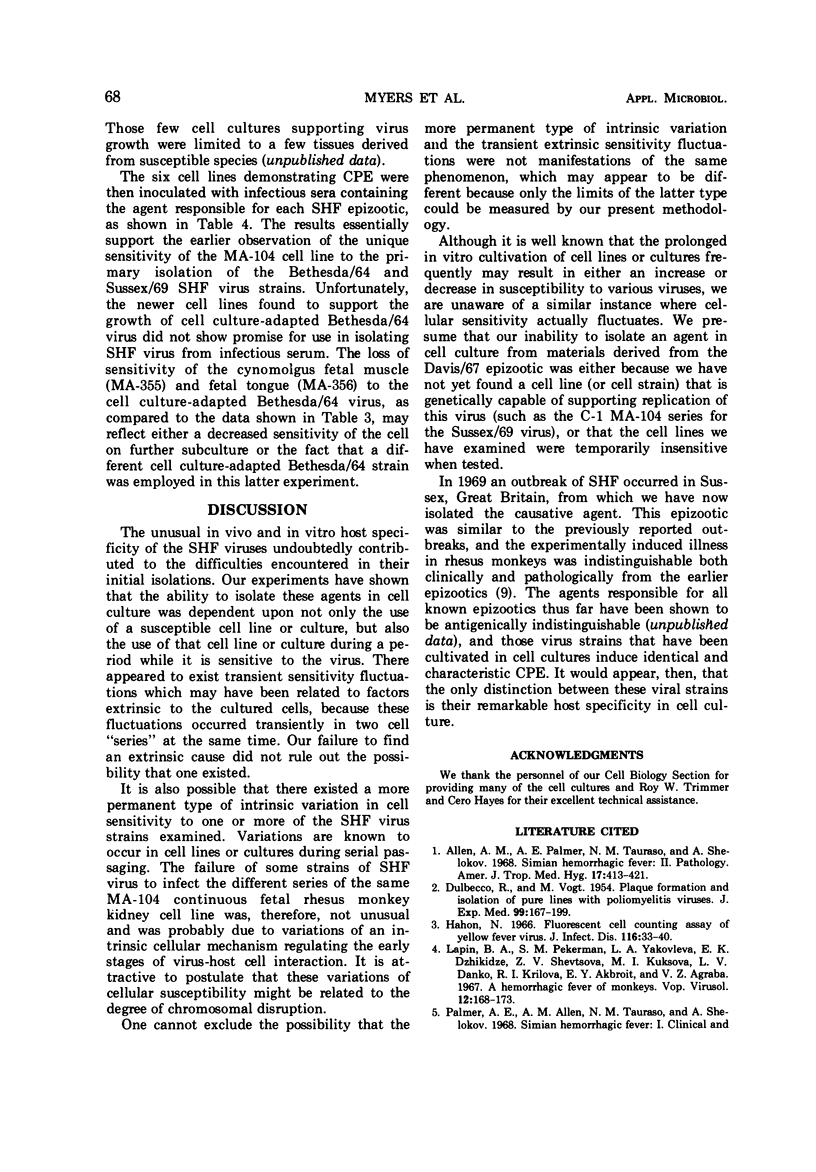
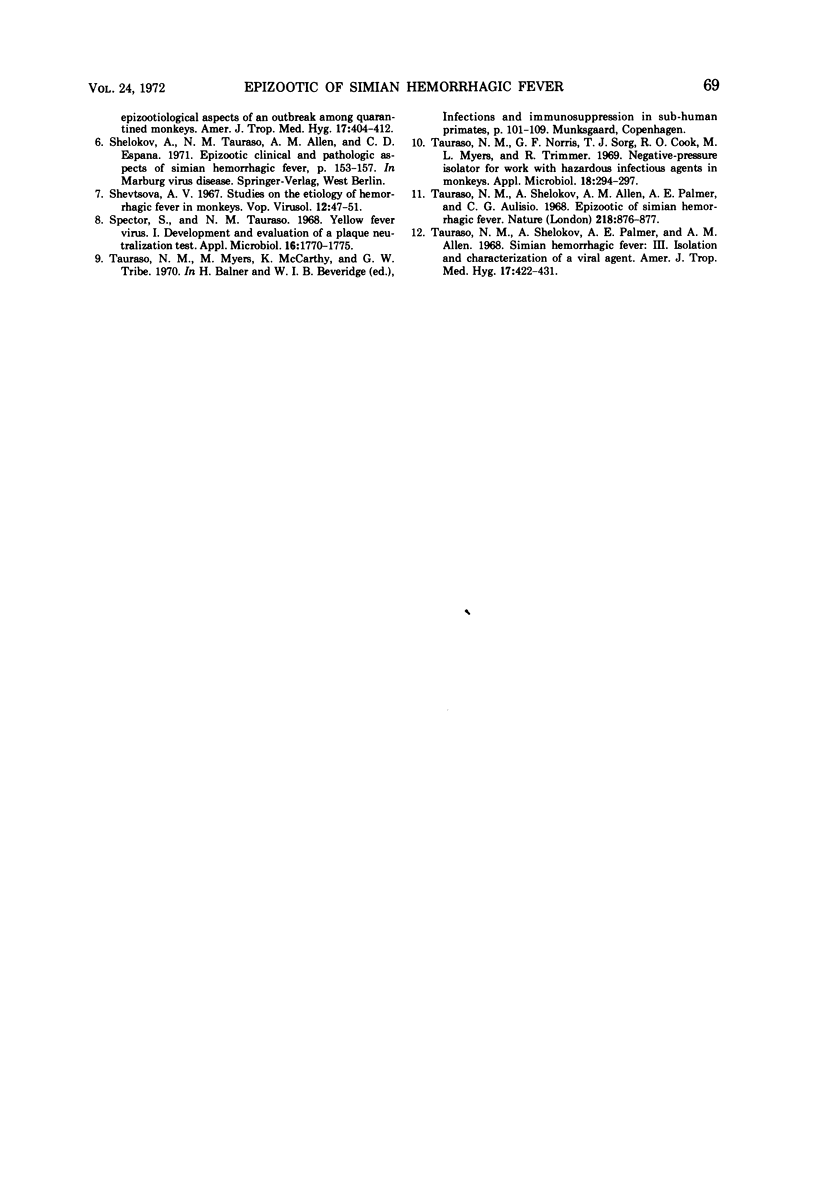
Selected References
These references are in PubMed. This may not be the complete list of references from this article.
- Allen A. M., Palmer A. E., Tauraso N. M., Shelokov A. Simian hemorrhagic fever. II. Studies in pathology. Am J Trop Med Hyg. 1968 May;17(3):413–421. doi: 10.4269/ajtmh.1968.17.413. [DOI] [PubMed] [Google Scholar]
- DULBECCO R., VOGT M. Plaque formation and isolation of pure lines with poliomyelitis viruses. J Exp Med. 1954 Feb;99(2):167–182. doi: 10.1084/jem.99.2.167. [DOI] [PMC free article] [PubMed] [Google Scholar]
- Hahon N. Fluorescent cell-counting assay of yellow fever virus. J Infect Dis. 1966 Feb;116(1):33–40. doi: 10.1093/infdis/116.1.33. [DOI] [PubMed] [Google Scholar]
- Lapin B. A., Pekerman S. M., Iakovleva L. A., Dzhikidze E. K., Shevtsova Z. V., Kuksova M. I., Dan'ko L. V., Krylova R. I., Akbroit E. Ia, Agrba V. Z. Gemorragicheskaia likhoradka obez'ian. Vopr Virusol. 1967 Mar-Apr;12(2):168–173. [PubMed] [Google Scholar]
- Palmer A. E., Allen A. M., Tauraso N. M., Shelokov A. Simian hemorrhagic fever. I. Clinical and epizootiologic aspects of an outbreak among quarantined monkeys. Am J Trop Med Hyg. 1968 May;17(3):404–412. [PubMed] [Google Scholar]
- Shevtsova Z. V. Izuchenie étiologii gemorragicheskoi likhoradki obez'ian. Vopr Virusol. 1967 Jan-Feb;12(1):47–51. [PubMed] [Google Scholar]
- Spector S., Tauraso N. M. Yellow fever virus. I. Development and evaluation of a plaque neutralization test. Appl Microbiol. 1968 Nov;16(11):1770–1775. doi: 10.1128/am.16.11.1770-1775.1968. [DOI] [PMC free article] [PubMed] [Google Scholar]
- Tauraso N. M., Norris G. F., Sorg T. J., Cook R. O., Myers M. L., Trimmer R. Negative-pressure isolator for work with hazardous infectious agents in monkeys. Appl Microbiol. 1969 Aug;18(2):294–297. doi: 10.1128/am.18.2.294-297.1969. [DOI] [PMC free article] [PubMed] [Google Scholar]
- Tauraso N. M., Shelokov A., Palmer A. E., Allen A. M. Simian hemorrhagic fever. 3. Isolation and characterization of a viral agent. Am J Trop Med Hyg. 1968 May;17(3):422–431. [PubMed] [Google Scholar]


